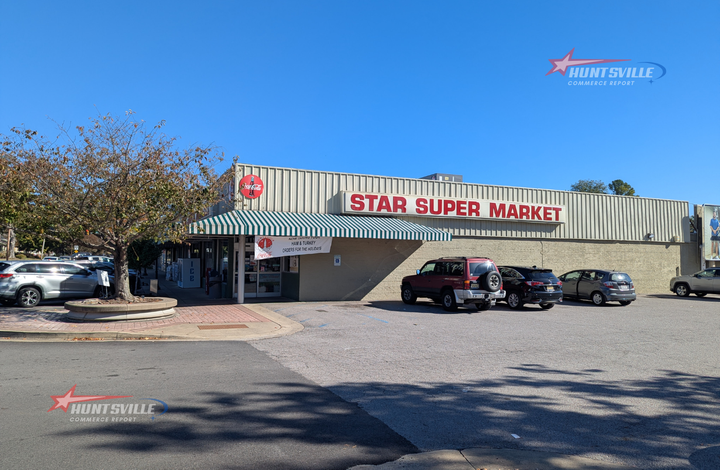Why Chattanooga Surpasses Huntsville for Small and Mid-Sized Business Growth in 2025

In the evolving economic landscape of the American South, Chattanooga, Tennessee, stands out as a prime destination for small and mid-sized businesses (SMBs) seeking sustainable expansion. With its array of supportive resources, thriving tourism sector, and diversified industries, Chattanooga offers a more balanced environment compared to Huntsville, Alabama, which, while experiencing rapid growth, relies heavily on government and defense contracts. This comparison explores how Chattanooga's strategic advantages—bolstered by vibrant culinary offerings and forward-thinking urban planning—position it as the superior choice for SMBs aiming for long-term success.
Robust Resources Empowering SMBs in Chattanooga
Chattanooga provides an extensive network of free and low-cost resources tailored to help SMBs thrive. The Tennessee Small Business Development Center (TSBDC) in Chattanooga offers confidential counseling, training, and business planning assistance. Complementing this, the Chattanooga Chamber of Commerce facilitates funding through local, state, and federal programs focused on job creation. Additional supports include SCORE Chattanooga's mentoring and workshops, the Enterprise Center's innovation programs, and Tech Goes Home Chattanooga's digital tools for entrepreneurs. The city's Office of Economic Development further enhances this ecosystem with entrepreneur-focused initiatives, including minority-owned business programs.
Huntsville also boasts solid SMB resources, such as the Catalyst Center for Business & Entrepreneurship, which drives economic growth through nonprofit services, and the Alabama Small Business Development Center (ASBDC) network offering statewide counseling. The Huntsville/Madison County Chamber supports startups and provides ecosystem guidance, while the UAH SBDC delivers free advising. However, some former members highlight challenges at the Huntsville Chamber, with a perceived emphasis on larger contractors over grassroots efforts, which could limit accessibility for smaller firms.
| Resource Category | Chattanooga Highlights | Huntsville Highlights |
|---|---|---|
| Counseling & Mentoring | TSBDC, SCORE, Enterprise Center | ASBDC, UAH SBDC, Catalyst Center |
| Funding & Loans | Chamber loan programs, state/federal options | SBA services, local grants |
| Training & Tools | Workshops, digital literacy programs | Networking events, APEX Accelerator for government contracts |
| Focus on Diversity | Minority supplier programs, DEI initiatives | Veteran and small business certifications |
This table illustrates Chattanooga's edge in comprehensive, inclusive supports that cater directly to SMB needs.
Tourism as a Catalyst: Chattanooga's Broad Appeal Drives Economic Multipliers
Tourism injects vitality into local economies, benefiting SMBs through increased consumer spending. In 2024, Hamilton County (encompassing Chattanooga) generated a record $1.8 billion in visitor spending, welcoming 10.7 million guests and saving households $1,205 in taxes annually. Tennessee's overall tourism hit $31.7 billion, with Chattanooga ranking fifth in the state.
Huntsville's tourism is strong, particularly in sports, with 68 events in 2024 yielding $51 million in impact and over 76,000 hotel nights. Madison County saw $2.4 billion in tourism revenue from nearly four million visitors. Yet, Chattanooga's diverse attractions—from natural sites to cultural events—create broader year-round opportunities for SMBs in retail, hospitality, and services, contrasting Huntsville's more niche focus on space and defense-related draws.
Industry Diversity: Chattanooga's Balanced Approach vs. Huntsville's Sector Concentration
A diversified economy reduces risks and opens doors for SMBs across sectors. Chattanooga's workforce spans healthcare, manufacturing, technology, and logistics, employing over 90,000 people with health and social assistance as the largest industry. Initiatives like the DIVERSIFY Summit promote inclusion, fostering growth in multiple areas.
Huntsville's economy, while robust, is predominantly tied to defense and government, with Redstone Arsenal contributing 58% of the regional product and attracting $14 billion in defense spending annually. This reliance exposes SMBs to federal budget fluctuations, though efforts to diversify into renewables show promise. Critics note that heavy lobbying for defense funds may overshadow broader SMB needs.
Culinary Vibrancy and Urban Planning: Fueling Chattanooga's Sustainable Expansion
Chattanooga's culinary landscape reflects its cultural diversity, featuring global flavors at spots like Apna Kitchen (Indian), Bela Lisboa (Portuguese), and Little Venezuela Restaurant. This scene supports food-related SMBs and enhances tourism appeal.
Urban planning in Chattanooga emphasizes infill development and affordability to manage growth, with the metro area adding population at a steady pace—reaching about 437,000 in 2024, a 25% increase since 2001. The comprehensive plan prioritizes sustainable expansion across Hamilton County.
Huntsville's population surged to over 246,000 by 2024, adding thousands annually and leading Alabama's growth. While impressive, this rapid pace strains infrastructure, with planning focused on housing additions (18,639 units since 2020). Chattanooga's measured approach better accommodates SMB integration into a growing, livable city.
For SMB owners eyeing Southern opportunities, Chattanooga's multifaceted strengths provide a resilient foundation. While Huntsville excels in specific sectors, Chattanooga's holistic strategy ensures broader, more inclusive growth prospects in 2025 and beyond.



